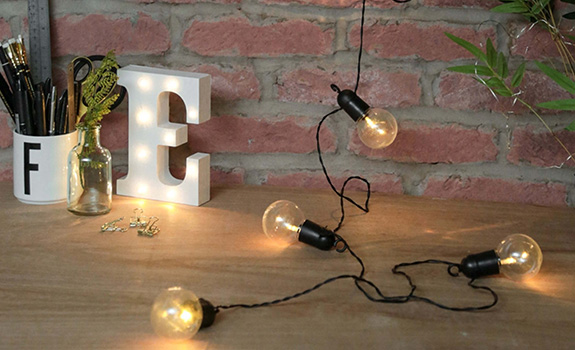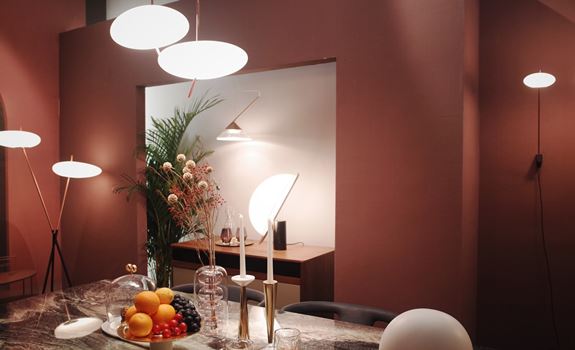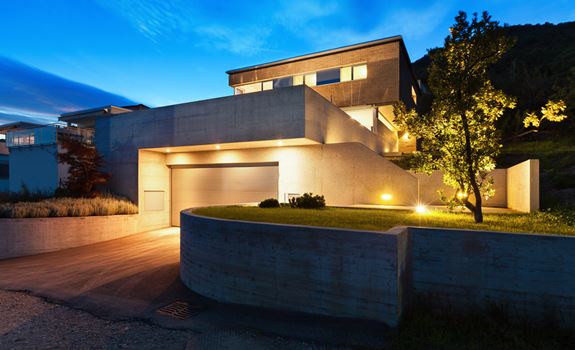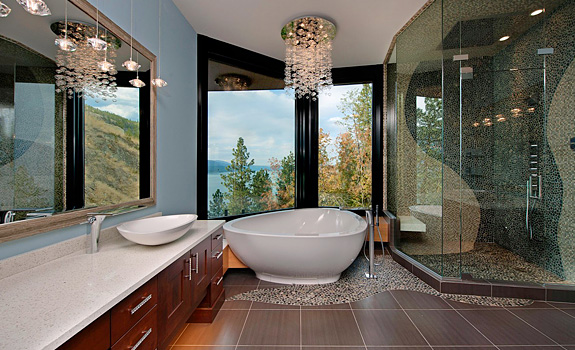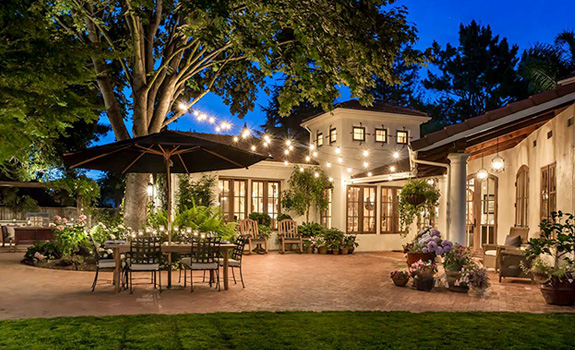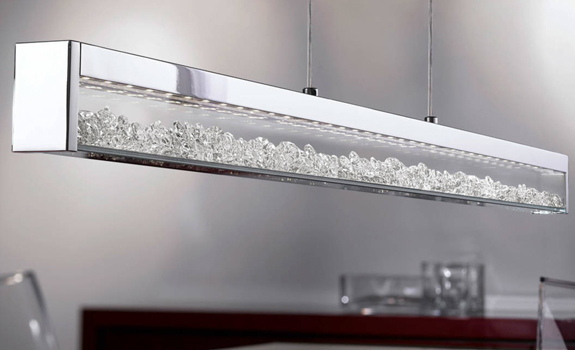You can lather your interior with top-fashion furniture, fresh colors, gorgeous ornaments, or intricately designed art pieces, but if room-by-room interior lighting is poor or improperly set up, the overall feel will be just as disappointingly mediocre.
Now, if you’re wondering how to ‘light’ things up, let’s be clear – it isn’t about simply changing a few light bulbs around. This is about reorganizing and re-designing the lighting scheme entirely, to match, complement and compliment the interior space. In this article we offer some tips and ideas on how to address and deal with creating proper room-by-room interior lighting.
But, first things first. To start off, we need to understand a few key truths about lighting in home interior design.
TABLE OF CONTENTS
1. Why is interior lighting important?
2. What types of lighting fixtures are commonly used interior lighting?
3. What main types of artificial lighting are out there to consider?
4. How to choose your room-by-room interior lighting?
—4.1 Entrance hall & hallway lighting
—4.2 Living room lighting
—4.3 Kitchen & dining room lighting
—4.4 Bedroom lighting
—4.5 Kids room lighting
—4.6 Bathroom lighting
5. Final thoughts on interior lighting
Why Is Interior Lighting Important?
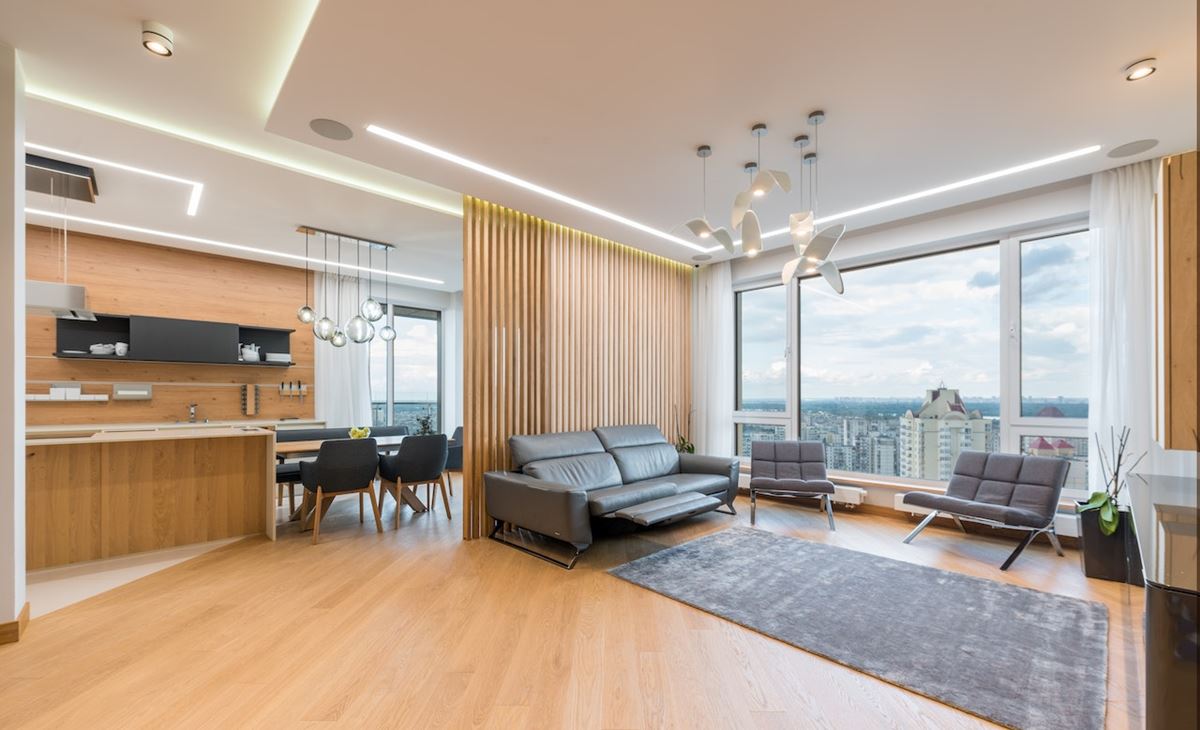
Interior lighting is crucial for several reasons, both – practical, as much as aesthetical:
Functionality
Interior lighting plays a fundamental role in ensuring the functionality of a space. Adequate lighting enables people to perform tasks effectively and safely. Different areas within a room may require varying levels of lighting, such as bright task lighting in the kitchen or focused lighting on a desk for work.
Spatial perception
Lighting can influence the perceived size and shape of a room. Well-placed lighting fixtures can make a small room feel more spacious, while appropriate interior lighting in large spaces can help create a cosy and inviting environment.
Highlighting architecture and features
Proper lighting can accentuate the architectural elements of a space, such as highlighting a beautiful ceiling, decorative moldings, or unique structural features. It can also draw attention to focal points, such as artwork, sculptures, or architectural focal points, adding depth and visual interest.
Visual comfort
Adequate interior lighting levels contribute to visual comfort, reducing eye strain and fatigue. The right balance of lighting prevents glare and shadows that can hinder visibility and make tasks more difficult. Comfortable lighting is especially important in areas where people spend a significant amount of time, like the living room, or the bedroom, or the office.
Ambience
Lighting greatly influences the mood and atmosphere of a room. By selecting the right lighting fixtures, bulbs, and intensity, you can create different moods ranging from warm and cosy to bright and energetic. The ambience created by lighting sets the tone for the space and enhances the overall aesthetic appeal.
Personalization
Lighting provides an opportunity for personalization and expression of individual style. By selecting different types of lighting fixtures, such as designer chandeliers, pendants, or sconces, and experimenting with light color, temperature, and intensity, you can customize the ambience and design of a space to reflect your personal taste and preferences.
Overall, lighting is an essential aspect of interior design, contributing to a functional, good-looking and inviting space.
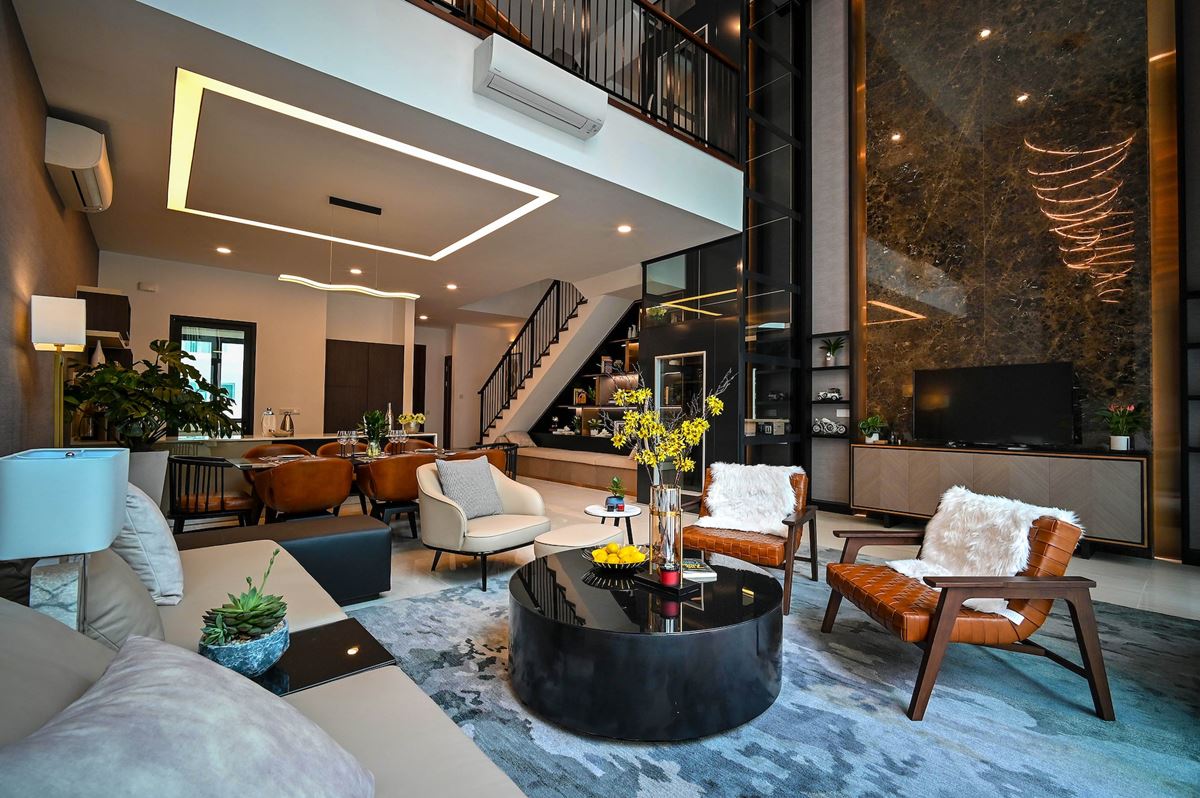
What Types of Lighting Fixtures Are Commonly Used Interior Lighting?
Chandeliers
Chandeliers are elaborate, decorative light fixtures suspended from the ceiling. They feature multiple arms or tiers, often adorned with crystals, glass, or other ornamental elements.
Pendant lights
Pendant lights are versatile fixtures that hang from the ceiling by a cord, chain, or a rod. They come in a range of styles, sizes, and materials and can be used individually or in clusters to create a dramatic effect.
Sconces
Sconces are wall-mounted fixtures that provide both functional and decorative lighting. They direct light either upwards or downwards, wherefore are often used to create interesting light effects on the walls as part of the overall interior design styling of the space.
Recessed lights
Recessed lights, also known as can lights or downlights, are installed into the ceiling, creating a sleek and minimalist look. They provide ambient or task lighting (depending on the location and type of bulb used) and offer flexibility and efficiency.
Track lights
Track lighting consists of a track system mounted on the ceiling or walls with adjustable light fixtures attached. It offers versatility as the individual fixtures can be repositioned along the track to highlight specific areas or objects.
Floor/Desk lamps
Floor and desk lamps are freestanding fixtures that can be placed wherever additional lighting is needed, making them a useful flexible lighting solution. Lately, there has been a strong trend in experimenting with floor lamps design in particular, in the attempt to achieve specific aesthetical effects in the overall interior styling.
And yes, it is about the light bulbs, too! We definitely need to know what type of light bulbs to use with the lighting fixtures we choose.
Incandescent bulbs: Traditional bulbs that produce a warm glow but are less energy-efficient.
Halogen bulbs: Bright and long-lasting, often used in task lighting and floodlights.
LED bulbs: Energy-efficient bulbs with long lifespans, available in various colors and adjustable intensities.
CFL bulbs: Compact fluorescent bulbs that offer energy efficiency but may take time to reach full brightness.
Smart bulbs: LED bulbs that can be controlled remotely, often compatible with voice assistants or smartphone apps.

Bulbs also differ by the temperature of the light they emit:
Warm white: These bulbs emit a warm, yellowish light similar to traditional incandescent bulbs and create a cosy and inviting ambience.
Cool white: Cool white bulbs produce a bright, neutral white light. They are often used in areas where task lighting is needed, as they provide good visibility and clarity.
Daylight: Daylight bulbs emit a crisp, bright white light that simulates natural daylight, so they are ideal for spaces where accurate color representation is important.
Finally, before illuminating each room, we need to also get familiar with the main types of interior lighting and learn about some smart lighting techniques.
What Main Types of Artificial Lighting Are Out There to Consider?
Ambient lighting
It provides overall illumination to a room and creates a comfortable and well-lit environment, allowing people the comfort to move around and perform their usual home routines and tasks at ease. Ambient lighting is usually achieved through ceiling-mounted fixtures, such as chandeliers, recessed lights, or track lighting.
Task lighting
It focuses on specific areas where people would perform activities that require more concentrated light, such as reading, cooking, or working on a project at a desk. Task lighting ensures adequate brightness and reduces eyestrain by illuminating the task at hand. Desk lamps, under-cabinet lights, and pendant lights are common examples of task lighting.
Accent lighting
It adds drama and highlights specific features or objects within a space. Accent lighting draws the eye to artworks, architectural details, or decorative elements, making them statement focal points of the interior. It can be achieved by track lights, wall-mounted fixtures, or adjustable recessed lights, creating visual interest and depth.
By combining these main types of artificial lighting, we can create layers of light that would not just serve functional but also aesthetic purposes, enhancing the overall styling of the space while meeting specific lighting needs.
How to Choose Your Room-by-Room Interior Lighting
Entrance Hall & Hallway Lighting
Lighting in these premises plays a crucial role in creating a welcoming and inviting atmosphere while providing functionality and visual appeal. Here are some tips:
Ambient lighting: Install general ambient lighting fixtures, such as a chandelier or a semi-flush mount ceiling fixture, to ensure a well-lit environment for safe movement and a warm welcome.
Accent lighting: Consider highlighting a focal point in the entrance hall or along the corridor, such as an art piece, a gallery wall, or a decorative element, using accent lighting fixtures. This draws attention and adds a touch of elegance to the space. Sconces, picture-lights, recessed or track lights are an excellent choice to achieve the desired effect.
Task lighting: Incorporate task lighting to assist with specific activities in the entrance hall, such as lighting a console table for keys or a mirror for last-minute touch-ups. Table lamps or wall sconces can be used to provide focused lighting in these areas.
Wall washers: Consider using wall washers, hidden or recessed lights with adjustable heads to “wash” the walls with light. This creates a soft and inviting glow, enhances architectural features, and adds visual depth and interest to the space.
Decorative lighting fixtures: Unique in design, eye-catching lighting fixtures would make a statement and set the tone for the overall design aesthetic of the space.

All-in-all, when designing the lighting for the entrance hall and the hallway, the key would be to balance functionality, aesthetics, and the intended mood. It should create a warm and inviting atmosphere while providing adequate illumination for safe and comfortable passage into the rest of the home.
Living Room Lighting
The living room is a multifunctional space and one of the largest rooms in the house, so, it needs equally appropriate, multifunctional and multipurpose illumination. Here are some ideas:
Ambient lighting: Ambient lighting in the living room provides the overall illumination, using ceiling-mounted fixtures such as statement chandeliers, designer pendants, flush mounts, or track lighting sets. Take into consideration the size and height of the room to choose the adequate fixture type and brightness levels.
Task lighting: Consider incorporating task lighting in the living room to provide focused illumination for activities like reading, working on a laptop, or playing games. Table lamps, floor lamps with adjustable heads, or swing-arm wall sconces are ideal for this purpose. Place them strategically near seating areas or workstations for optimal functionality.
Accent lighting: Use accent lighting in the living room to create visual interest and draw attention to specific features or objects. This can be achieved with track lighting, adjustable wall-mounted spotlights, or picture lights to highlight artwork, sculptures, or architectural details.
Dimmers: Dimmer switches will adjust light intensity, creating different levels of brightness hence, different moods, depending on the occasion or on the desired ambience in the room appropriate for socializing, family time, relaxing, or just watching TV.
Natural light: Make the most of natural light during the day by keeping windows uncovered or using sheer curtains or blinds to allow light to filter in. Consider the orientation and placement of furniture to maximize natural light in the living room while minimizing glare and heat. Natural light is also great for live plants and for the Oh, so trendy! – vertical live walls boosting visual interest and adding texture to the room design overall styling, especially if it is oddly shaped.
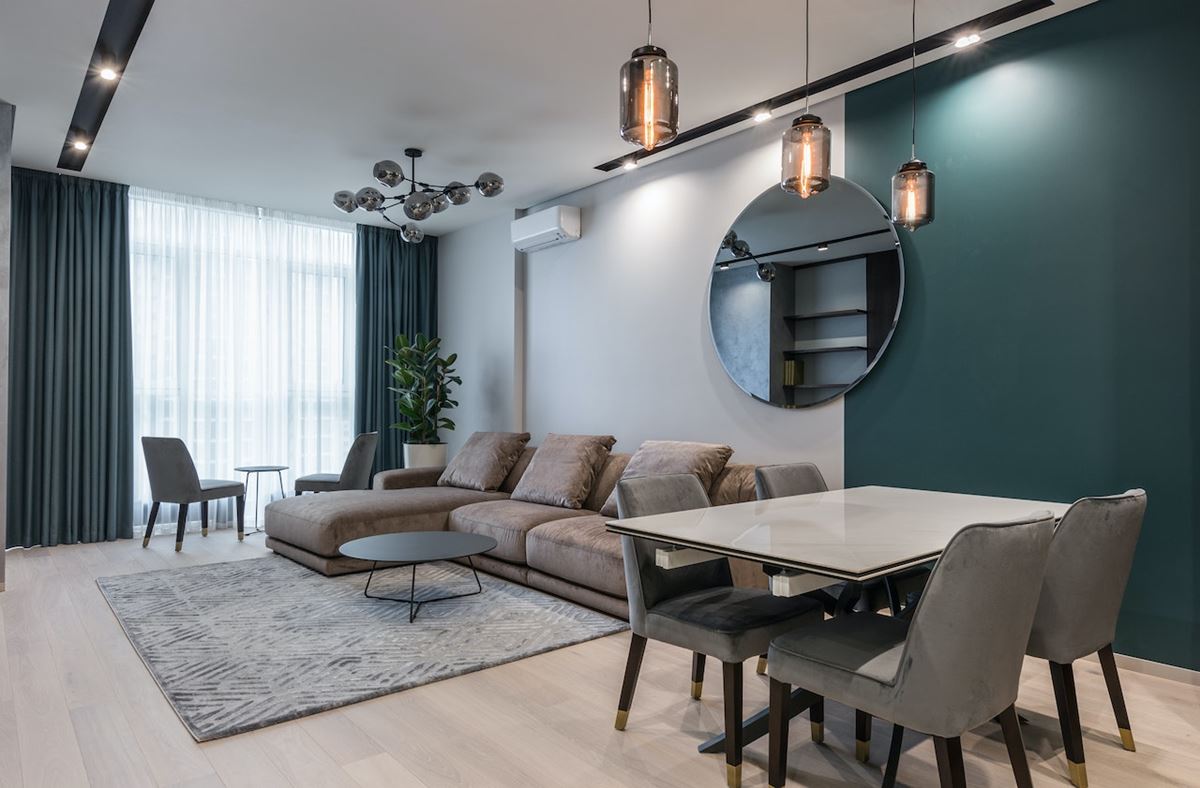
Light layering is the key to achieving the best lighting set-up in the living room. The combination of natural, ambient, task, and accent lighting, achieved by using various light fixtures and even different types of light bulbs, provides versatility and allows customization of lighting, to match the various activities or moods experienced in this particular room.
When selecting the lighting options for the living room, remember to consider the overall design and aesthetic of the space, too. Choose fixtures that complement the style and decor of the room while fulfilling the functional lighting needs.
Kitchen & Dining Room Lighting
Lighting in the kitchen and the dining room has essential significance in providing both functionality and ambience. Depending on the general layout of the house, these would be two separate, dedicated areas, where the kitchen would normally be a more active and task-orientated space, while the dining room is a rather multifunctional area that can be used for socializing with family and friends (meal or no meal!), for doing some work, and just as much as for some quiet “me-time” moments, too. Such diversity in activities and experiences packed within a relatively small space requires equally versatile and well thought-of interior lighting scheme, too!
Kitchen Lighting
Ambient lighting: Bright and evenly distributed ambient lighting in the kitchen is of essence to ensure best visibility for the multiple tasks performed in this space. This can be achieved with ceiling-mounted fixtures, complemented by well positioned recessed lights or track lighting. Where possible, let as much natural light in as possible, too.
Task lighting: Focused task lighting is key in areas where specific activities take place, such as over the countertops, kitchen island, or stove. Task lighting in the kitchen helps minimize shadows and ensures adequate illumination for food preparation and cooking. Under-cabinet lighting, pendant lights, or adjustable recessed lights are commonly used for this purpose.
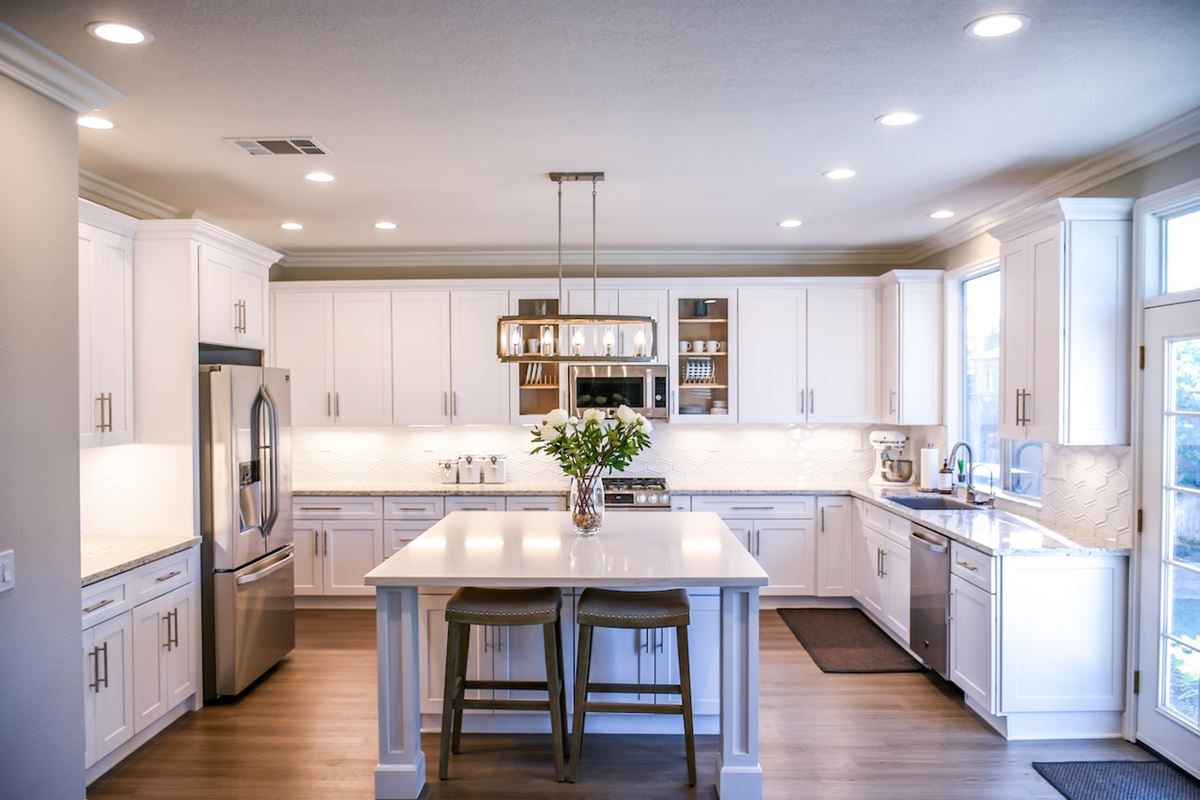
Dining Room Lighting
Ambient lighting: Ambient lighting in the dining room assists the general natural light illumination and sets the mood for meals and gatherings. It would usually feature a statement chandelier or pendant light fixture hanging over the dining table, often complemented, however, by well positioned sconces and recessed or tracking lights, to build light layers, and create in this way a more inviting atmosphere.
Table lighting: To add mood, complement ambient lighting by table lamps or candelabras placed on a sideboard, a buffet table or on the dining table itself.
Accent lighting: Use accent lighting in the dining room to highlight artwork, a feature wall, or a display cabinet. Picture lights, adjustable spotlights, or wall-mounted fixtures can be used to draw attention to these focal points.
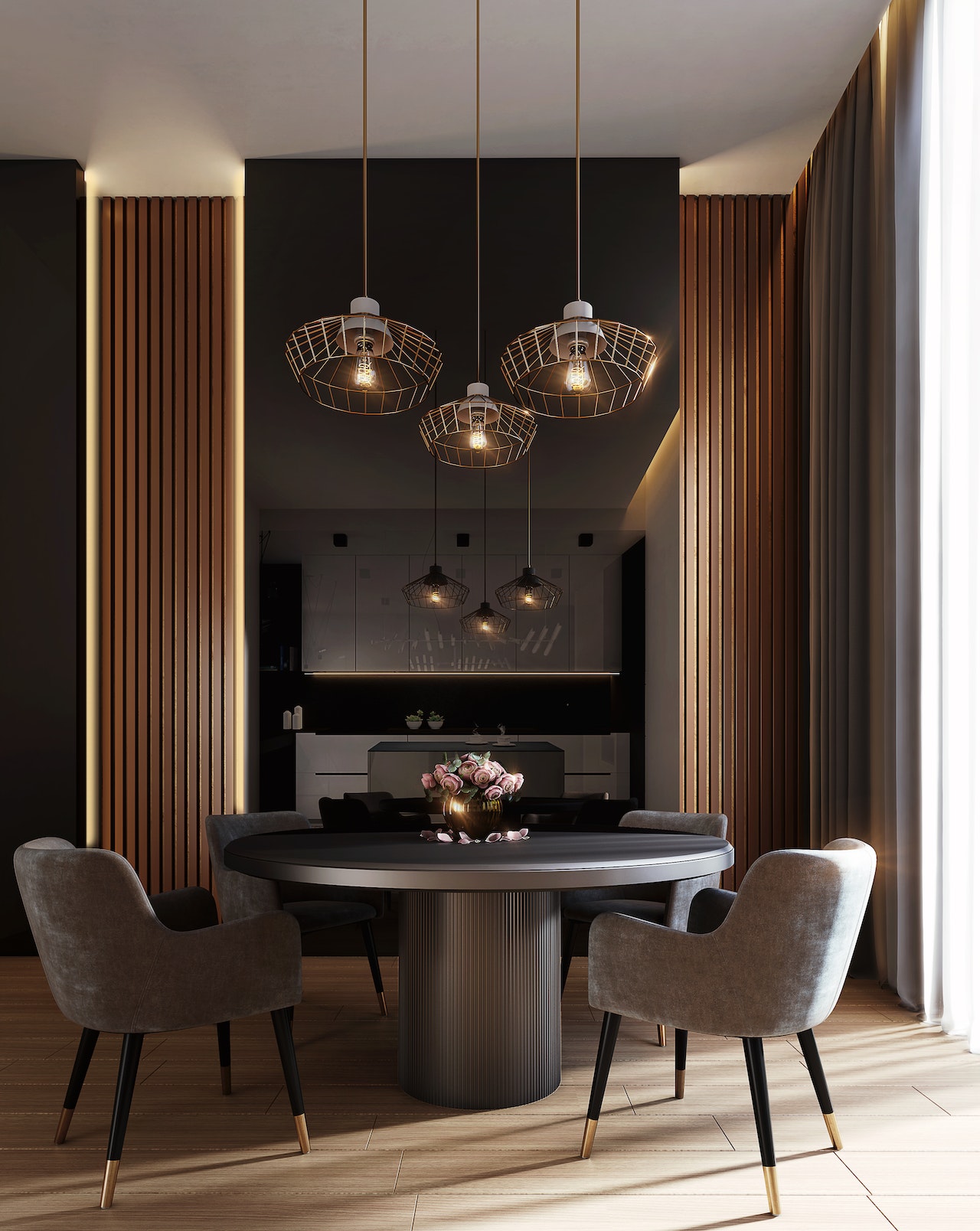
Remember to consider the specific layout, size, and design of the kitchen and dining room when selecting lighting fixtures. The goal is to provide adequate interior lighting for performing tasks, create a comfortable ambience, and enhance the overall functionality and aesthetics of the space.
Bedroom Lighting
The bedroom is one of the most personal and intimate spaces in the house, and it needs to be a place of relaxing and comfy ambience. Interior lighting can make or break the mood in the bedroom, so it is a key element of the entire design and styling of the space. Here are some tips:
Ambient lighting: A bedroom needs not to be illuminated too brightly. On the contrary, the ambient lighting in the bedroom should live up to its name and create a soothing and relaxing ambience. A central ceiling fixture or flush mount would be enough to provide general illumination and distribute light evenly throughout the space of the room.
Task lighting: For activities such as reading, working on a laptop, or getting ready, task lighting in the bedroom is essential. Consider installing task lighting fixtures near and by furniture items or in accordingly dedicated nooks – by the bed, by the dressing table, by a lounge chair, or in a reading nook. And while table lamps are most commonly used for providing task lighting in the bedroom, wall-mounted sconces or adjustable floor lamps are ideal runners-up for the purpose.
Indirect lighting: Indirect lighting, such as hidden LED strips or wall washers, provide a soft and diffused glow, which makes them a popular choice for bedroom lighting set-up. Such light sources can be installed behind headboards, under furniture, or along the ceiling to create a soothing and calming environment.
Dimmers: If not in the bedroom, where then?! Dimmer switches in the bedroom are, indeed, the ideal smart solution to control and adjust light intensity and brightness, and create the desired ambience.
Accent lighting: As elsewhere, accent lighting would here, too, highlight architectural features, artwork, or decorative elements, to add drama and statement to the interior styling. It can be achieved with wall-mounted picture lights, LED strips, or adjustable spotlights, creating visual interest and enhancing the room’s aesthetics.
Natural light: Use window treatments such as curtains or blinds to control the amount of natural light entering the bedroom. Sheer or light-filtering curtains can allow soft, diffused light during the day while maintaining privacy.
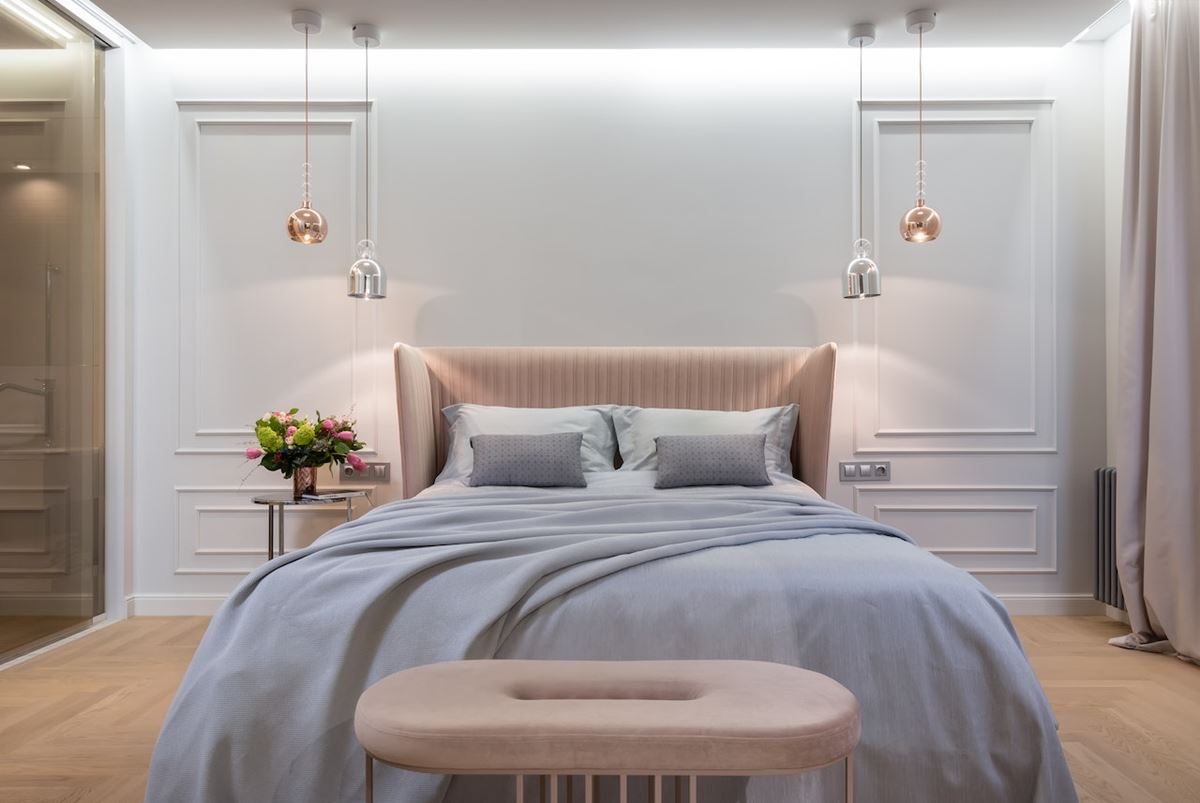
Remember to create a balance between functional and atmospheric lighting in the bedroom. It should be comfortable for everyday tasks and promote relaxation and restfulness for a good night’s sleep.
Kids Room Lighting
Lighting in a kids room should be designed to foster a safe and comfortable environment while stimulating the kids’ imagination and supporting their activities. Here are some tips:
General lighting: Install a central ceiling light fixture that provides ample illumination for the entire room. This could be a playful and decorative fixture that reflects the child’s interests and adds a touch of whimsy to the space.
Task lighting: Include task lighting near study areas, play areas, or reading nooks. Desk lamps or adjustable table lamps provide focused lighting for activities such as reading, drawing, or doing homework.
Night lighting: Incorporate gentle night lights or low-level interior lighting to provide a sense of security and comfort during bedtime. Night lights with soft, warm glow can help alleviate any fear of darkness and create a soothing atmosphere.
Playful and interactive lighting: Consider lighting fixtures that are fun and interactive, such as pendant lights in the shape of stars or clouds, or wall-mounted lights that project shapes or patterns on the walls. These types of kids room lighting can enhance the imaginative and creative play experience for children.
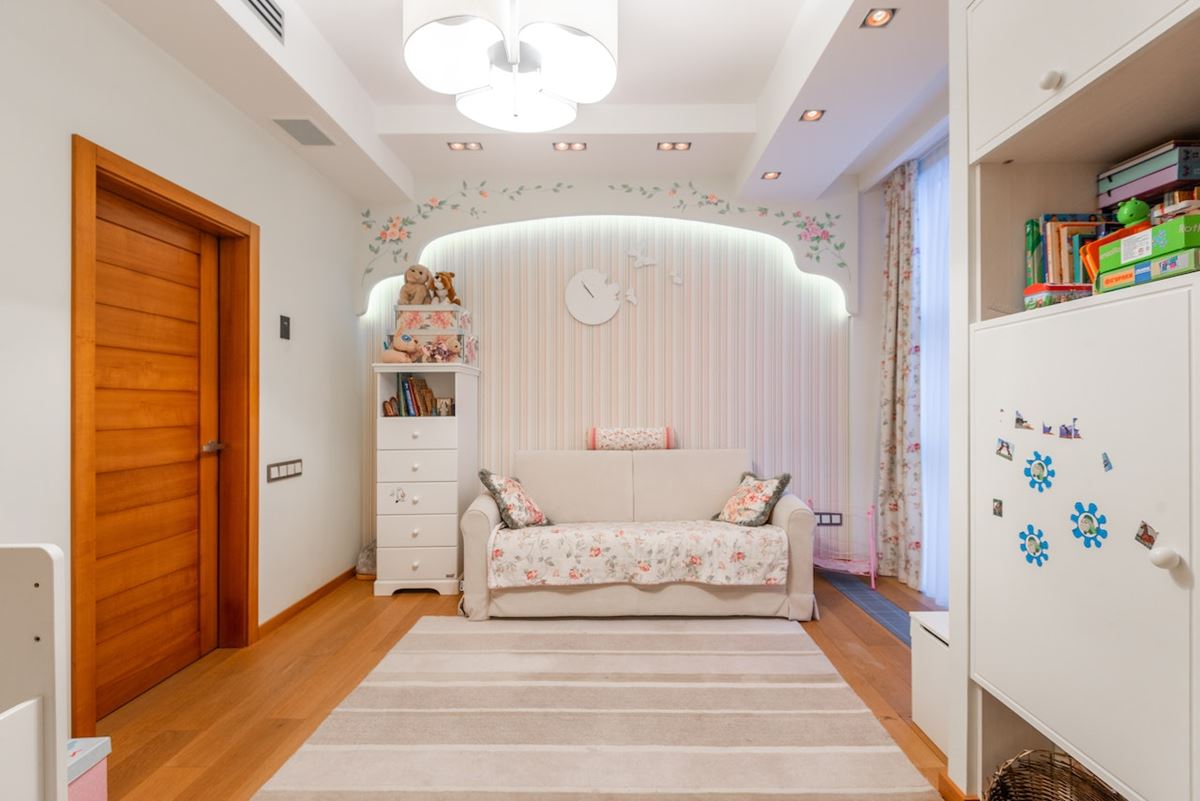
It would be a great idea to involve the kids in selecting the lighting fixtures for their room. Let them choose interior lights that reflect their interests, featuring favorite characters, themes, or colors. This will help in creating a sense of ownership and character to their own room.
It is paramount to ensure that all electrical cords and fixtures are safely installed and out of reach of children. Use childproof covers for outlets and opt for LED bulbs that don’t get hot to the touch.
Remember to also provide flexibility in the lighting design so that it can be adjusted according to different activities, as much as to age-specific changes.
Bathroom Lighting
Lighting in the bathroom serves both functional and aesthetic purposes and should be designed for creating a well-lit and visually appealing space. Here are a few tips on how to set up proper bathroom lighting:
Ambient lighting: The general, overall illumination in the bathroom can be achieved with ceiling-mounted fixtures, recessed lights, or a combination of both. The ambient lighting should be bright enough to ensure good visibility, but to also create a pleasant atmosphere.
Natural light: In case the bathroom has windows or/and skylights, make sure to allow maximum natural light to stream in unobstructed through those, keeping them uncovered or using sheer window treatments that allow light to filter in. Natural light provides a fresh and uplifting atmosphere and is great for live plants.
Task lighting: Task lighting in the bathroom is very much needed around the vanity mirror to provide even and shadow-free illumination for grooming tasks, such as applying makeup or shaving. Vertical fixtures on both sides of the mirror or a horizontal vanity light above the mirror are common choices.
Shower and bathtub lighting: Consider installing waterproof and damp-rated lighting fixtures in the shower and bathtub areas. These can include recessed lights, LED strips, or shower trim kits that provide targeted lighting for these specific areas.
Accent lighting: Incorporate accent lighting to enhance the bathroom’s aesthetic appeal and highlight architectural features, artwork, or decorative elements. This can be achieved with wall sconces, recessed lights with adjustable heads, or LED strips placed strategically to create a focal point.
Indirect lighting: Consider installing low-intensity, soft-glow backlighting, under-cabinet lighting, or cove lighting sources, to create a spa-like atmosphere and enhance the overall design aesthetic of the bathroom.
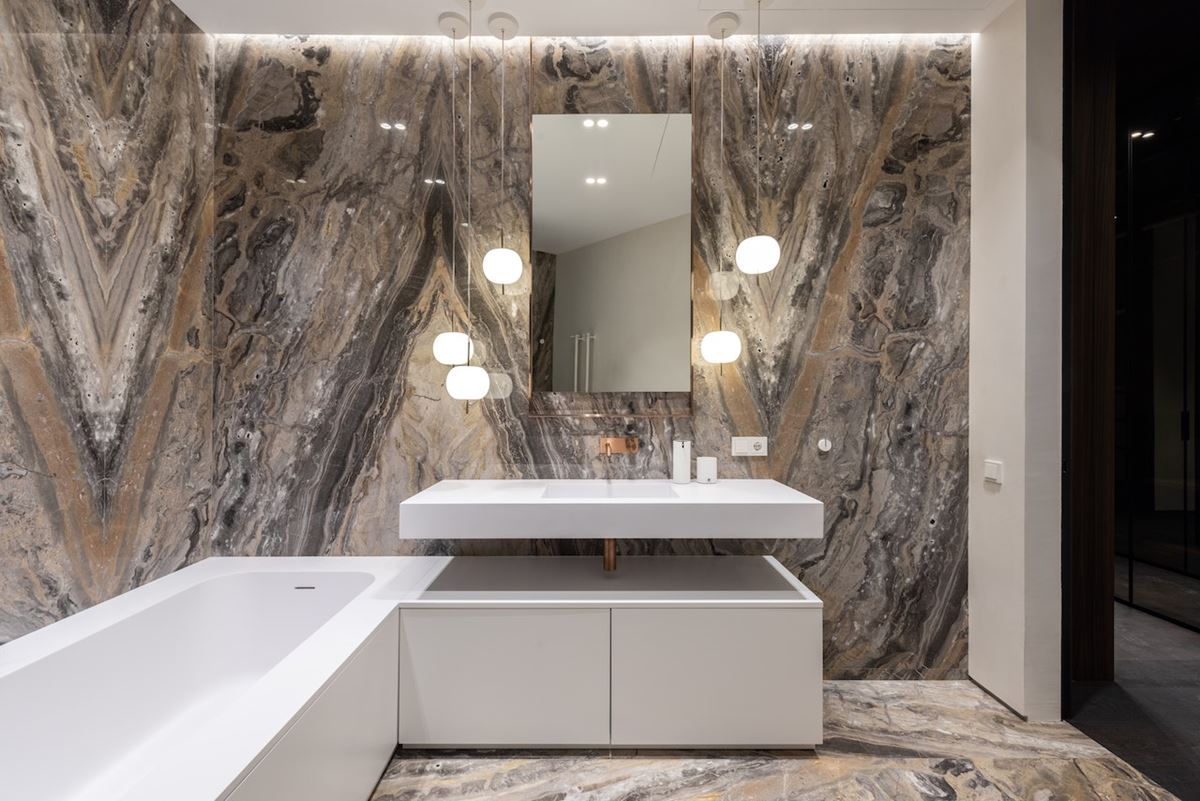
Ensure that all electrical fixtures are rated for use in damp or wet areas and are properly installed to prevent any potential hazards. Consider using GFCI (Ground Fault Circuit Interrupter) outlets for added safety.
Remember to strike a balance between functionality and aesthetics when designing the lighting in the bathroom. It should provide ample illumination for daily tasks while creating a pleasant and inviting atmosphere for a relaxing and refreshing experience.
Final Thoughts on Interior Lighting
To sum it all up, adequate interior lighting is an important aspect of any design project, essential for creating a comfortable and functional living space. Lighting can refine the ambiance of a room, highlight architectural and interior styling features, and improve functionality. By selecting the right types of lighting fixtures, bulbs, and placement, it is possible to create a cohesive and inviting environment that reflects personal style and meets individual needs.
Published in: Home advice | Author: Rossitsa



